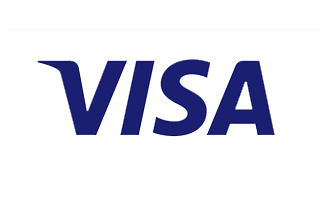
SUP or stand-up paddleboard yoga is simply Yoga with a deviation of stand-up paddleboard surfing. The sport can also be termed practicing Yoga on a stand-up paddleboard amidst water. It is mainly enjoyed when played on flat water bodies like lakes. It requires you to stand on a board, and this board can be precise as a surfboard in width or depth or similar to it. To play SUP Yoga, all you need to know is the tricks and tips on the best places to stand and how to use your paddle correctly, and lastly, where to pay attention to when paddling.
Part 1: What is SUP Yoga?
The SUP is known to be the Yoga on water bodies, but Yoga can also be practiced on land. Nonetheless, aside from the fact that they are both played in different locations, there are other differences. For example, practicing Yoga on land means you are always grounded while practicing with a paddleboard implies that you're continuously moving with the wind. Because of this, Practicing Yoga on water requires extreme concentration to balance and keep the paddleboard moving steadily. In addition, paddling on the water is far more interesting than on Land; you get to appreciate the environment you are in and breathe in the fresh air with every posture, even with closed eyes.

Benefits of SUP Yoga
There are many benefits associated with playing SUP Yoga, as outlined below:
The major benefits of SUP Yoga are associated with health and emotion. This sport has a hugely positive effect on those who practice it. It is not just an exercise; it helps to perform lots of functions in the human body.
Yoga is a sport that requires you to practice in different postures, and every posture helps to contribute to one's state of health. It helps strengthen muscles, increases blood circulation, improves balancing, gives a calming nature, and many other benefits. Also, it's a great exercise, but you can also have fun when practicing it. Exercise should be enjoyable, and AUP Yoga is not an exemption.
Part 2: How To Do SUP Yoga
Having known exactly what SUP Yoga is and some of its benefits next is understanding the right (best) ways it is practiced.
1. Choose The Best Paddle Boards for Yoga
The first step is to get a paddleboard explicitly designed for it. A SUP Yoga board has some features that distinguish it from an ordinary board. Board specially designed for SUP Yoga look more Yoga specific because of the qualities it possesses. Some of these features are a modified deck pad, accessory for attachments that make it look more Yoga specific.
The following are factors to consider when choosing a SUP Yoga board.
i. The proportion of the board
A board usually has a width of about 36 inches with a thickness of 6 inches, but a 34 Inches board width and 5 inches thick will be more stable because it will ride lower on the water than the former. Also, a 5-inch board is easy to mount than a 6-inch board, and in some cases, if you end up falling into the water, it's going to be a better option. Board length should be considered. A convenient board should be within the span of a 10–11-foot range. A board with a size below 10 is going to be difficult to stretch out on during postures.

ii. Deck pad
The deck pad is among the features present In a SUP Yoga board. It usually runs through the entire length of the Board. Therefore, look out for a deck pad with extra space for your belongings, covering up the three-fourths of the board at least. Also, make sure your deck pad has a good grip if you do not have a towel. Besides, a good grip will help you adapt when using one, depending on the weather condition. A flat strap handle and a removable handgrip should be considered to protect your hands while carrying the board and easily take it off when it's time to practice. Finally, some boards have a grip at the sides of the deck pad and make it comfortable to lift.

iii. FIN SET UP
A fin setup does not precisely affect a board's performance on the water, but there are some fin systems we need to know how they operate. There are 2 basic fin systems, the permanent 3-fin system, and the configurable fin system. A permanent 3-fin system does not require any form of stress, and it makes it easier for you to enter the water you desire to begin from a trivial position. A board with this type of Fin system can also be used on Land, but you can only do this by resting the fin a few inches on the ground.
On the contrary, a configurable fin system features removable fins, thereby allowing you to practice your Yoga on L and F. Noteworthily, a few boards have a mixed Fin setup system, which combines the permanent 3-fin system and the configurable fin system. However, they are not the choices because they do not perform their functions effectively compared to boards with a single Fin setup system.

iii. The Type of Board
There are inflatable and hard SUP Yoga board. The inflatables are considered to be the best for SUP Yoga. It has a smoother and delicate surface, and it's more stable than a hardboard. It can also be taken when traveling, not restricting you from practicing your favorite sport. Above all, Inflatable boards are more durable than rigid boards.
Best Paddle Board for Yoga: AKASO IO01 10' Inflatable Stand Up Paddle Board

This paddle board has a two-layer protective structure made of PVC material, and it's suitable for beginners and clutch hitting fans. It is 10' long, 32 '' wide, and 6 '' thick, which is wide enough to provide superior stability.
It is an adjustable SUP paddle with an Aluminum shaft that can be adjusted to 15-20cm longer than the user's height.
The paddleboard also comes with a double-action air pump that makes it possible to blow up or shrink an inflatable SUP board quickly. It has two marks on it, and they both perform the actions of deflating and inflating the board. The "in" mark is used to inflate, while the "out" mark is used to reduce. Safety leash, detachable fin are included.
2. Prepare Essentials for Paddle Board Yoga
After choosing the best paddle for SUP Yoga, the next step is to appropriately prepare the “essentials” needed. Below are a few of these essentials:

i. Paddles
This the primary practice of Yoga; the first thing learned is how to hold a paddle. The direction of the blade present in the water has an enormous impact on paddle power. The blade angle should always face away from you and not towards you. Also, choosing the right paddle is very crucial. You have to consider some other factors, including the paddle length, materials, blade size, shape, etc.
ii. Leash
A leash provides an easy and comfortable way to paddle. It is worn for safety, just like a seat belt when driving. There are different types of leashes; the straight leash, coiled leash, and quick-release leash.
iii. PFD
A PFD means Personal Flotation Device. Every paddler is required to have PFD on board while paddling beyond the designated swim zone. It helps to save a life when worn correctly.
iv. Anchor
An anchor allows you to retain your favorable position offshore. Its purpose is to remain stationary on moving water.
Part 3: 6 Basic SUP Yoga Poses you can try
1. Easy Seated Pose: it requires you to sit up tall on the board with your hips resting solely on the handle and your hands resting on your knees.

2. Child's Pose: Ensure your navel is above the board's handle, separate your knees and make your big toes touch. Seat your forehead on the board with your hips sink to the back. Your arms can expand onto your front with your fingers lagging the water.

3. Bridge Pose: The bridge pose needs you to sit on your back with your knees bent and the soles of your feet on the Board. Widen feet and lift your hips upward with your arms beneath to add to the height.

4. Plank Pose: start from bending, shift forward and lift your shoulders above your wrists. Make use of your low belly; try lifting one of your legs at a time.

5. Downward-Facing Dog Pose: Start from laying down and lift your hips upward to the sky, stretch your legs and look downwards.

6. Upward-Facing Dog: place your hands near the ribs, then put them into the board and press. Lift your body, and if possible, you can engage your knees by lifting away from the Board.

Conclusion
Practicing Yoga decreases stress and cardiovascular diseases; why not try it out knowing that it's fun. This article, hopefully, will help you effortlessly get started with practicing SUP Yoga efficiently.
















